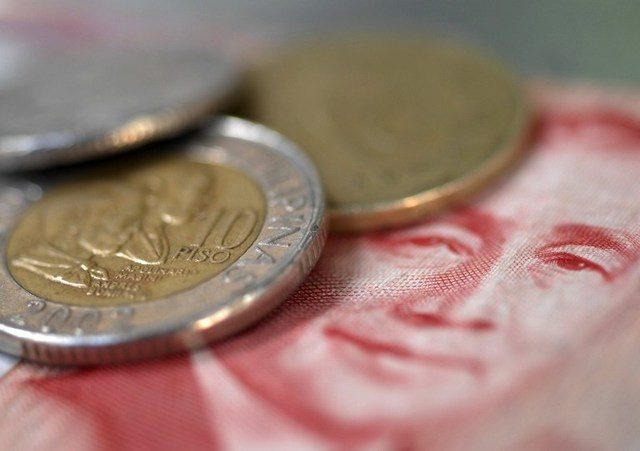SUMMARY
This is AI generated summarization, which may have errors. For context, always refer to the full article.

MANILA, Philippines – The country’s total debt owed to foreign creditors dropped in the 2nd quarter of 2017, according to the Bangko Sentral ng Pilipinas (BSP).
BSP Officer-in-Charge Diwa Guinigundo announced on Friday, September 15, that outstanding Philippine external debt stood at $72.5 billion as of end-June 2017, down by $1.3 billion or 1.8% from the $73.8 billion at the end of March 2017.
Guinigundo noted that the lowering of the debt “was brought about by $1.2 billion in net repayments, largely by the private sector, and an increase in residents’ investments in Philippine debt papers issued offshore of $110 million.”
The debt level as of June 2017 is also down by $5.2 billion, or 6.7%, from the $77.7 billion at end-June 2016.
The BSP attributed the drop to net principal repayments of $2.7 billion by both the public and private sectors as well as previous periods’ adjustments due to late reporting which dropped it by a further $1.4 billion.
Beyond that, a change in foreign exchange valuations arising from the strengthening of the US dollar against other currencies, particularly the Japanese yen and the Philippine peso, also trimmed it by $1.2 billion.
Manageable debt
Guinigundo also said that key external debt indicators remained at comfortable levels with gross international reserves at $81.3 billion as of end-June 2017, representing 5.6 times cover for short-term debt.
The debt to service ratio, which compares principal and interest payments to exports, also improved to 6.6% compared to 8.8% in end-March 2017 due to higher receipts and lower payments between July 2016 and June 2017.
The country’s external debt ratio or total outstanding debt as a percentage of gross national income and gross domestic product also improved to 19.5% from 20.0% in the 1st quarter of 2017 and 21.7% at end-June 2016.
External debt remains mainly medium- to long-term in nature, comprising 79.9%. According to the BSP, this means foreign exchange requirements for debt payments are well spread out and more manageable. Debt with maturities longer than one year are medium- and long-term.
BSP data showed that weighted average maturity of medium- to long-term accounts stood at 17.9 years, with public sector borrowings having a longer average term of 23.7 years compared to 8.1 years for the private sector.
Public external debt stood at $37.5 billion, accounting for 51.7% of total debt stock, while private sector debt dropped to $35.0 billion from the $36.1 billion last quarter, which the BSP said was largely due to net repayments of $1.1 billion.
Loans from multilateral and bilateral creditors at $23.7 billion, and foreign banks and other financial institutions at $23.7 billion, comprised the largest share of total outstanding debt at 32.7% each.
The debt also remains largely denominated in US dollars at 62.8%, followed by Japanese yen at 12.8%.
The BSP said US dollar-denominated multi-currency loans from the World Bank and the Asian Development Bank had a 13.9% share to total, while the remaining 10.5% balance was in 17 other currencies, including the Philippine peso at 6.5%, Special Drawing Rights (SDR) at 2.2%, and the euro at 1.3%. – Rappler.com
Add a comment
How does this make you feel?
There are no comments yet. Add your comment to start the conversation.